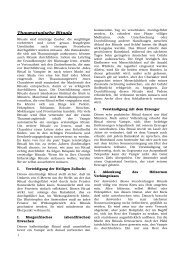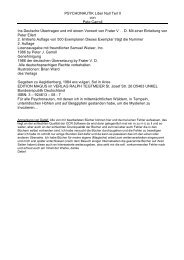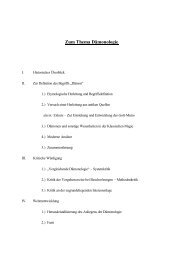CHAPTER 2 CHAPTER 3 CHAPTER 1 CHAPTER 2 CHAPTER 3 ...
CHAPTER 2 CHAPTER 3 CHAPTER 1 CHAPTER 2 CHAPTER 3 ...
CHAPTER 2 CHAPTER 3 CHAPTER 1 CHAPTER 2 CHAPTER 3 ...
Create successful ePaper yourself
Turn your PDF publications into a flip-book with our unique Google optimized e-Paper software.
<strong>CHAPTER</strong> 3 20<br />
Throughout space are positive and negative parallel light lines of force running between each other at right<br />
angles and consisting of charged particles vibrating at varying rates producing a rhythmic wave effect of<br />
bands. These lines of force also vary in the number of particles they contain in a given distance, that is, they<br />
vary in their density. When negative and positive lines or bands ( equal to the diameter of the particle to be)<br />
with equal densities and vibrations cross, a vortex is set up which condenses the positive particles and these<br />
become _substance_Â as nuclei . . . either a proton (atomic nucleus), or a comet (early evolutionary form of a<br />
planet), or a sun (nucleus of a solar system). The negative particles are condensed as the _Resonating<br />
Electro-magnetic Field_ (_vortex_) of an atom, a planet, or a sun.<br />
When the positive particles have condensed sufficiently, and the surrounding negative vortex has gained<br />
sufficient strength, the insulating force of pure light between and around the positive and negative forces is<br />
reduced and polarity is set up from the flux motion of the positive and negative. A strong vortex is indicated<br />
by flattened poles (oblateness) and equatorial bulging in the particle. If the vortex breaks the substance<br />
disappears as it returns into the solution of the light lines of force, known as the ether or space. (The vortex of<br />
the planet Lucifer, the planet now known as the asteroid belt, broke through hydrogen experimentation.)<br />
When the particle is sufficiently polarized, rotation results from the constant application of the positive and<br />
negative light forces to the vortex.<br />
A comet travels in the currents of the sun's vortex (RMF) until its own vortex (RMF) breaks (The<br />
Andromedes, or Bielid meteors move in the path of the lost Biela's comet which disintegrated and was last<br />
seen in 1852) or it becomes sufficiently powerful to attain an orbit of its own, in which case it becomes a<br />
planet.<br />
Now let us consider three bodies which operate in a Resonating Electro-magnetic Field of Force: (1) The Sun<br />
(acting as a nucleus): One-hundred years ago, in 1854, the eminent astronomer Sir William Herschel<br />
suggested that the Sun may be inhabited and that the inhabitants may no more suffer from intense heat than<br />
those who live in the tropical regions of Earth! He believed the Sun to be a cool body, not a hot, flaming gas<br />
ball.<br />
Since it has been shown that the satellite planets are magnetic in nature, it is only right to assume that the<br />
governing body that rules those planets is also magnetic in nature. So, we might say that the Sun is the<br />
magnetic "brain" or ganglion of our entire Solar System. Its forces are the directing intelligence of all the<br />
functions of our System. It is from this great central, nuclear body that the planets draw their magnetic energy<br />
so that they, too, may generate forces.<br />
The Sun's vortex is very intense as would be expected of such a huge body, and it must extend to the very<br />
outer limits of the System. Its atmosphere has three main layers: the chromosphere; the reversing layer; and<br />
the photosphere. Completely enveloping these layers is the corona. When photographed in hydrogen light the<br />
Sun displays its magnetic structure very well. Such a photograph shows a grainy effect very similar to that<br />
produced when iron filings are sprinkled in a magnetic field.<br />
Scientists today state that the Sun is a gigantic atomic furnace radiating a tremendous amount of heat to the<br />
satellite planets each second. The temperature at its surface is said to be thousands of degrees and the internal<br />
temperature is supposedly in the millions of degrees. However, it is unexplainable how super-heated gasses<br />
can act magnetically. For, it is an elementary fact of physics that a substance loses its magnetism when<br />
heated! Since astronomers have definitely recorded magnetic effects upon the Sun, we have a direct conflict<br />
between the Sun's true nature and the suggested temperature. This conflict only indicates that the Sun is not<br />
the super-heated mass of gases that scientists think it is, but rather, a cool body as Herschel said it was.<br />
There is much evidence to prove that the Sun it, indeed, a cool body. The process of determining the Sun's<br />
temperature is very complex and involves the radiation laws of physics. Fundamentally, here is how such<br />
temperatures are determined: the radiation of the body per square centimeter per second, times the body's






